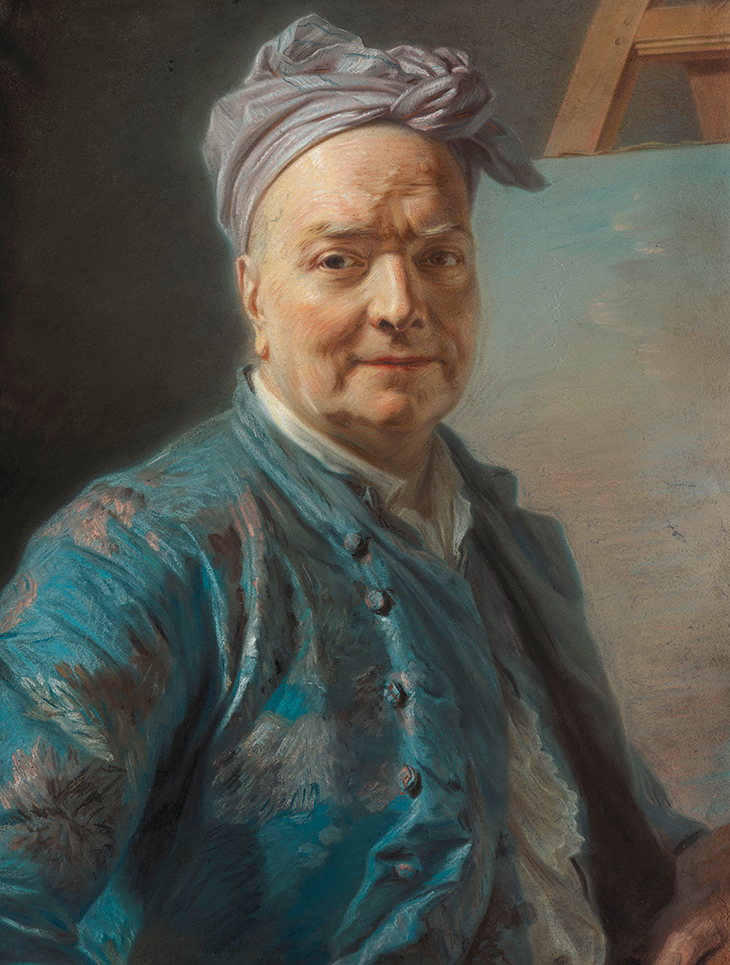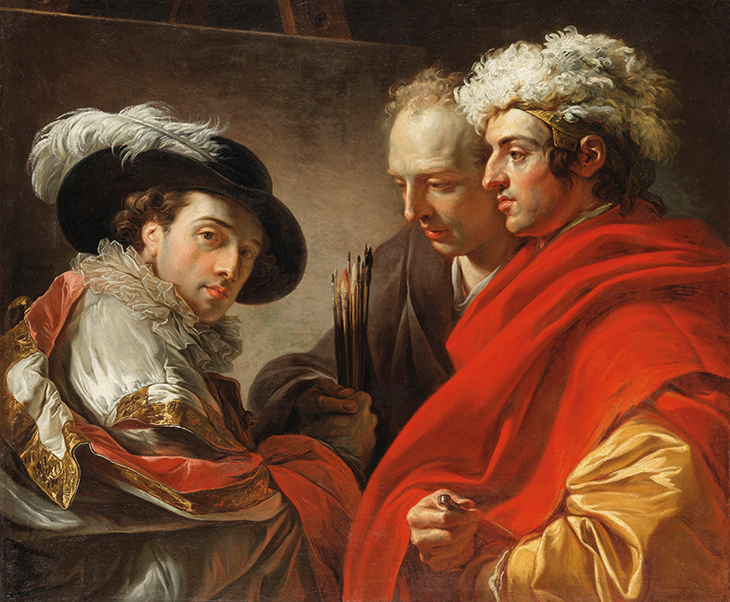This review of Jessica L. Fripp’s Portraiture and Friendship in Enlightenment France (University of Delaware Press) appears in the April 2021 issue of Apollo. Preview and subscribe here.
In 1764 the philosopher Jean-Jacques Rousseau wrote to the pastellist Maurice-Quentin de La Tour that his portrait by the artist would ‘allow our friendship to be remembered forever’. What this meant, how common such a sentiment was, and how artistic friendships with fellow professionals, patrons and the wider intellectual community evolved over the 18th century in France are the focus of this thought-provoking study.

Jessica Fripp considers the perception of friendship in the context of the Enlightenment – as a measure of civility and sociability and, indeed, civilisation. In Diderot’s Encyclopédie friendship was defined as ‘the practice of maintaining a decent and pleasant commerce with someone’. It has been linked with a much wider range of activities, such as the proliferation of correspondence and gift-giving, and the formation and joining of secular societies and informal gatherings such as salons; but it has not hitherto been extensively considered in connection with portraiture of the period. This seems odd, given that portraits are arguably the most sociable of all visual art forms – commemorating direct encounters, being shown in public and private contexts and ranging from intimate imagery to the grandiose and propagandist. The author has a rich vein to mine, which runs through artists’ professional and personal lives.
The evidence marshalled here ranges from biographies and published criticism to lectures, philosophical discussions, private memoirs and close readings of paintings and pastels; we are even shown analysis of the frequency of the use of the words ami (friend) and amitié (friendship) in contemporary texts. Through all this, you enter a convivial world of artistic alliances and camaraderie, as well as their inevitable counterpoint – rivalries and bitterness (although this side of things is given less prominence; perhaps it could become the subject of another volume).
The theme of friendship is first addressed in the context of the Royal Academy of Painting and Sculpture, an institution that was elite and hierarchical, but also a community of – in theory – like-minded individuals. What friendship meant was an issue especially in the context of how criticism was delivered. Ideally, it should be offered in private and come from artists of equal skill; in reality, it was far more widely circulated, sometimes taking on a political dimension, as the Academy’s public exhibition became a regular fixture in the Paris calendar from 1737 and the expanding reading public was enthusiastically engaged by the shifting fashions of art.
Portrait of Louis de Silvestre (1743), Maurice-Quentin de La Tour. Musée Antoine Lécuyer, Saint-Quentin. Photo: Mathieu Rabeau (Musée du Louvre, Paris); © 2021 RMN-Grand Palais /Dist. Photo SCALA, Florence

Next, Fripp focuses on portraits of intellectuals and artists and the ways in which these pictures were viewed, both in public, in exhibitions, and also in domestic settings, where smaller but nonetheless significant groups of admirers would have access to them. Self-promotion and formulation of modes of celebrity through the portraiture of Charles-Nicolas Cochin and La Tour are discussed and a fascinating shift in perception explored: such portraits were at first criticised as indicating greed and vanity – but, as greater emphasis was placed on the intellectual circles in which the artists operated, critics came to see them as a product of friendship rather than being driven by a desire for profit.
The female Academicians Élisabeth Vigée Le Brun and Adélaïde Labille-Guiard are then turned to in order to illuminate further the numerous variations that developed on these themes. Like the male artists discussed earlier they had celebrity status and many friendships, but they are often considered rivals, and Fripp explores the ways in which their reputations were shaped and narrowed by critics because of this and because of their unusual status as female artists. The two painters’ careers are compared and their presumed competition (which appears to have been over-emphasised) is shown to have closed down informed comparison of their works with that of their male contemporaries.
Portrait de trois hommes (1775), François-André Vincent. Musée du Louvre, Paris. Photo: Philippe Fuzeau (Musée du Louvre, Paris); © 2021 RMN-Grand Palais /Dist. Photo SCALA, Florence

The final chapter moves the discussion from Paris to Rome in the 1770s and the opportunities to be enjoyed in the city by French artists through the Prix de Rome, which was offered by the Academy. Fripp chooses to examine this environment via the work of François-André Vincent, using his informal and wittily drawn caricatures as a window on to the cosmopolitan and intensely social nature of artistic life in the city experienced by art students. She considers in detail his Portrait de trois hommes, which he painted in Marseille on his way home to Paris, and which depicts him with his fellow artists Philippe-Henri Coclers van Wyck and Pierre Rousseau in an intense and theatrical encounter before a blank canvas, on the cusp of their mature, professional lives. Fripp compares it with contemporary friendship portraits by artists such as Giuseppe Baldrighi and James Barry and shown to be part of a distinguished tradition of images of male bonding that travelling painters drew upon, for which there were Italian, Flemish and French precedents – ranging from Pontormo to Rubens, Van Dyck and Le Sueur.
Fripp’s epilogue takes us again into new territory – the period of the Revolution and the unprecedented challenges it presented both for portraiture and friendships. The Academy’s biennial exhibition was now open to all artists, rather than being the exclusive domain of Academicians. Numerous portraits appeared, many of which celebrated revolutionary heroes, but there was a shift in terms of the wider resonance of such works to issues of political fraternity. Paintings became exposed to fiercer criticism, while to some degree their status as signifiers of private networks of friendship fell away.
What emerges from all this erudite analysis is a nuanced and intimate take on what might be seen too simplistically as the rigid ancien régime world of art. Beneath the surface many friendships were warm, but rivalries seethed, competition was inevitable and criticism could wound. From the perspective of the 21st century, we might perhaps conclude that little has changed and these are among the necessary characteristics of the creative industries – a term with which Diderot would have been entirely comfortable.
From the April 2021 issue of Apollo. Preview and subscribe here.



